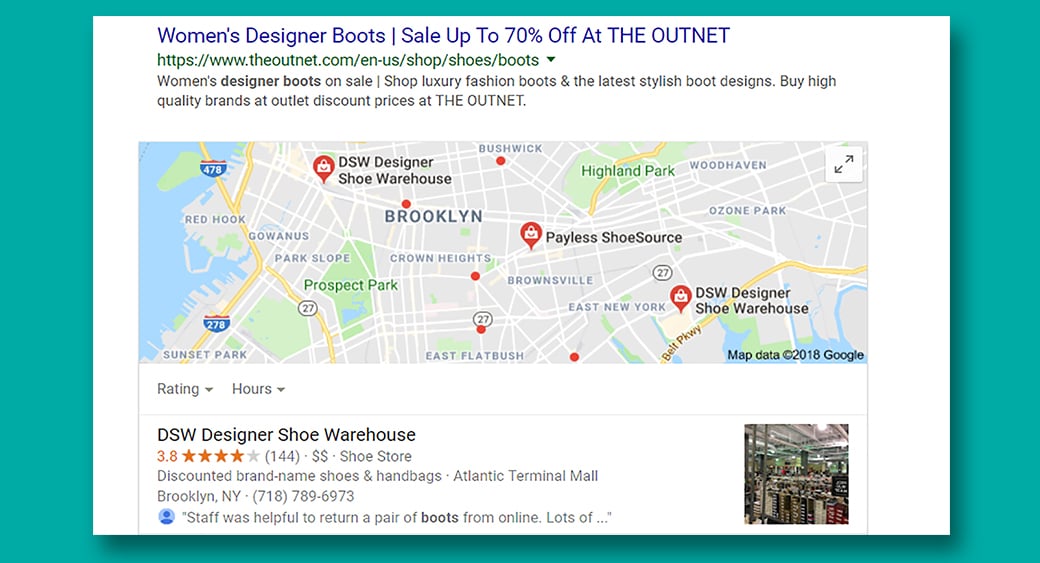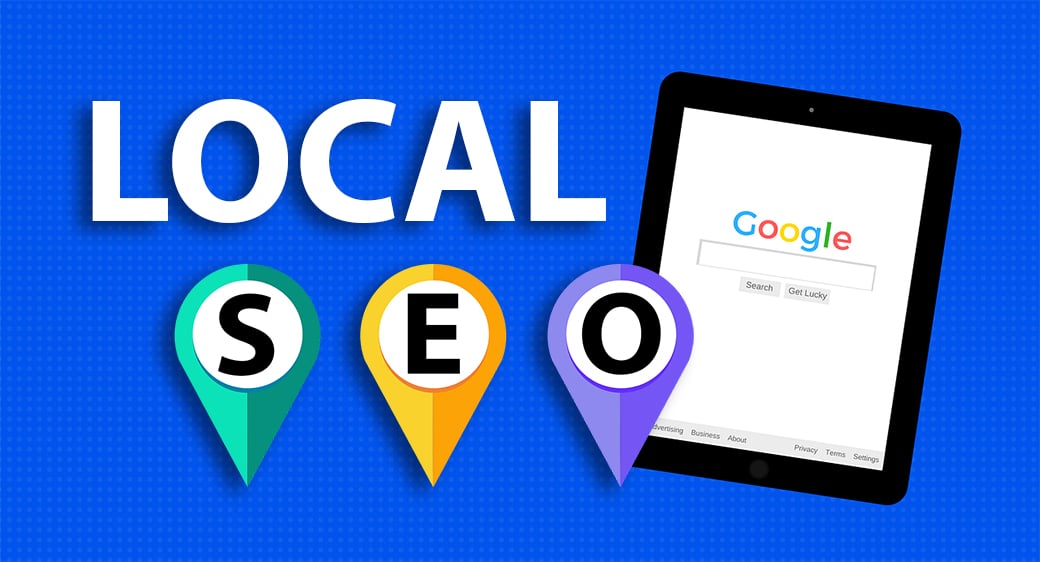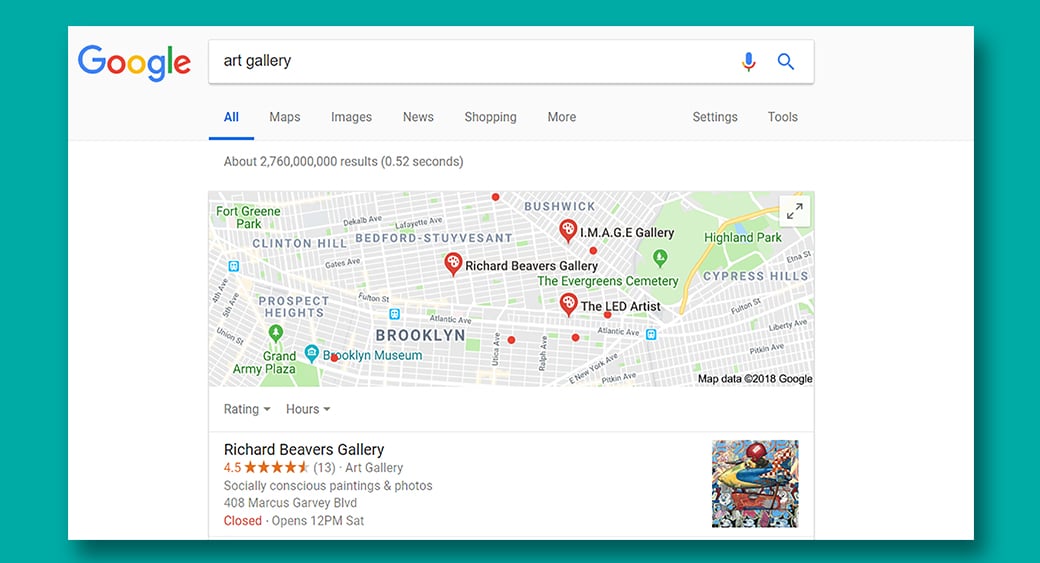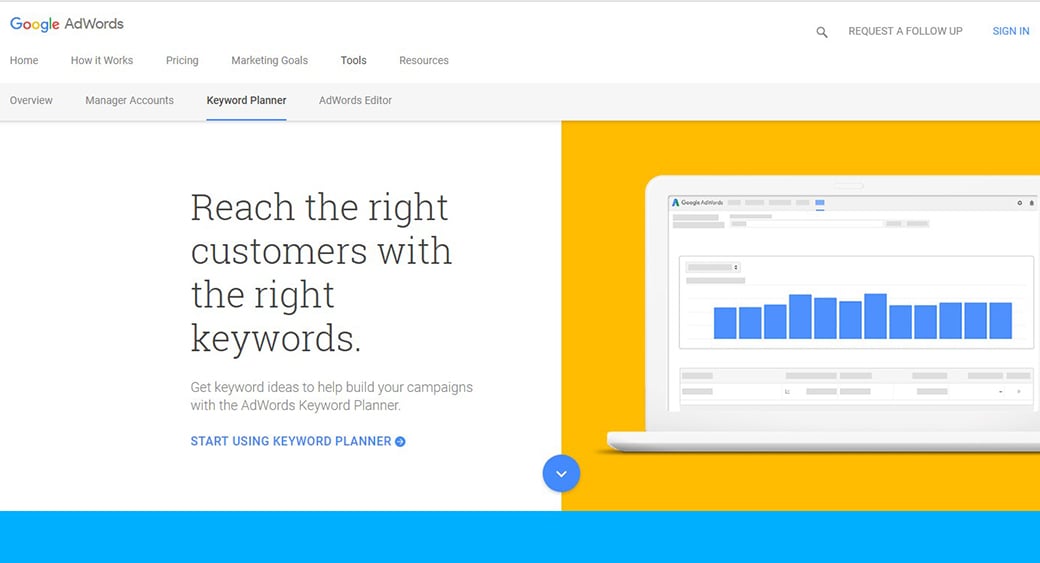Search Intent – How User Keyword Intent Influences SEO and Conversions
Search intent is an idea that often gets lost on SEO professionals and digital marketers. You might think that you can just pick a few keywords related to your business, throw them up on your website, and your organic search traffic will quadruple overnight.

But, just because a particular search term is related to your business, doesn’t mean it’s the right choice for your SEO campaign. Google views certain search terms differently. If you use the wrong one, your campaign may be ineffective and the people that do find your website probably won’t have any interest in your products and services.
If you want to make the most of your SEO efforts and increase your organic traffic and sales, you need to incorporate search intent marketing into your strategy. This means understanding the intent behind certain keywords and choosing terms most likely to attract potential consumers to your business. Learn everything you need to know about search intent and what it means for your SEO campaign and conversions.
What Is User Keyword Intent?
User search intent examines the intention of the person entering a certain keyword or phrase into search engines like Google. Once you understand the intention behind keywords, you can be more selective when choosing target keywords for your SEO campaign. Understanding search intent targeting requires a bit of basic psychology. If a person enters the search phrase “designer boots” into Google, we can assume this person is interested in designer boots. They may be looking to make a purchase, find a store that sells designer boots near them, or learn about the latest trends in footwear.

While you may have an idea of what a person is looking for when they enter certain search terms into Google, you also have to understand how Google views these terms. Google has its own way of calculating what a person is looking for when they enter specific terms and phrases into the search bar.
How Google Views Intent
Google uses search intent when ranking websites in its search results. By understanding the intention of the user, Google can better serve its users by directing them to the right content. To better measure and track user search intent, Google has devised a rating system that ranks content based on its ability to meet the user’s needs.
While the details of Google’s algorithm remain under wraps, ensuring its control of the online search industry, the company is doing its best to be transparent. If you look over the Google Search Quality Rating Guidelines, you’ll see that Google has specific criteria for its top-ranking websites. If you want to earn a top spot in the search rankings, you should comb through these guidelines to make sure you’re satisfying Google’s users.
How Google Tracks and Measures User Search Intent
Under Section 3 of the Google Search Quality Rating Guidelines, you’ll find the “Needs Met Rating Guidelines”, which details how Google measures the usefulness of content based on the user’s intent. The scale range from Fails to Meet the user’s intent (FailM) to Fully Meets the user’s intent (FullyM) with several levels in between.
The guidelines also point out that Google will flag certain types of content, including porn, offensive/hateful content, foreign language content, and web pages that simply don’t load. Content that falls into one of these flagged categories will be removed from the search results, depending on the user’s search settings.
Google uses these rating guidelines to make sure its users are finding what they need online. We all know that Google crawls through text data and uses a range of ranking factors to find out what a website is all about. These bots will look for certain keywords and text copy to see if a website is more informational or transactional. Based on this text data, Google will then rank these websites based on what the algorithm assumes is the user’s intent.
But, these guidelines aren’t always accurate. Of course, Google can’t read its users’ minds and some search queries are bound to throw Google for a loop, forcing the user to alter their query until the find the information they’re looking for. Like the “designer boots” example, certain search queries can have multiple meanings, especially generic search terms and acronyms which may refer to different organizations and businesses.
Classifying Search Term Interpretations
Because of this confusion, Google classifies certain queries based on their interpretation, sometimes encompassing multiple interpretations simultaneously. Once Google can classify the interpretation of each search phrase, it can understand the user’s intent. For this reason, Google uses the following search query classifications:
Dominant Interpretations
As you might imagine, the dominant interpretation is how most people interpret certain terms and phrases. For the dominant interpretation, there tends to be little confusion in terms of what the term represents or what the person is looking for.
For example, if a person enters the search phrase “Eagles patriots game score”, it almost certainly means that the person is trying to find the score of the most recent football game between the Philadelphia Eagles and the New England Patriots. If the person makes this search during the football season, the score for the most recent game will likely appear in the Google Answers section right at the top of the search results. The person will quickly read the score without even clicking on any of the search results.
Common Interpretations
Common interpretations are for search terms whose meaning tends to be less straightforward or those with two, equally-relevant interpretations. When a person enters a search term with various common interpretations, Google will usually cover all its bases and present search results that cater to multiple interpretations.
For example, if a person enters the search term “iron”, it could mean that they’re looking for information about iron the mineral, iron the element or the appliance used to remove wrinkles from clothing. As you can see, things can quickly get confusing. So, Google offers search results related to iron the element and iron the mineral, choosing not to include iron the appliance at the top.
Minor Interpretations
And, of course, nearly every search term comes with minor interpretations, which may only apply in certain situations. Lots of different terms can be interpreted differently, even if they have a dominant interpretation.
For example, let’s say someone enters the term “Pennsylvania Eagles” into the search bar. Google will assume that most people will be looking for information about the sports team the Philadelphia Eagles, including recent scores, their upcoming schedule, current players and stats, etc. But some people may be looking for information about endangered birds in the state of Pennsylvania.
The person may refine their search to avoid information about the sports team, while others may have to scroll through pages of search results until they find what they’re looking for.
Additional Factors That Affect User Keyword Intent
Understanding the different classifications of search terms and how Google makes sense of them is a great first step, but things will change depending on where the user is located, what kind of device they’re using to conduct the search and how they’re searching.
Location
Google can track a user’s location based on their internet protocol (IP) address. You can bet Google’s algorithm is going to put this information to good use. The user’s location will change the search results, depending on the search term. This isn’t usually true for generic keywords and phrases, but it holds true for business locations and shopping-related searches.

If a user enters the term “designer boots” into the search bar, some of the results will appear on Google Maps, showing local retailers near the user’s area. If the user is hiding their IP address using a virtual private network (VPN), Google may remove these location-based search results.
Mobile vs. Desktop
Mobile devices now account for 57% of all search traffic and Google is paying close attention to these trends. The company has already introduced the mobile-first index, which means that a website will be ranked largely based on data from its mobile website instead of the desktop version.
These changes mean that more users are on-the-go when they’re searching. They may not have time to wait for web pages to load or may be unable to enter their payment information to complete a purchase. Thus, many mobile searches are information-based. To make up for these differences, Google will adjust the search results to reflect more timely search results, directing users to easily-accessible websites with clear information.
Types of Search Intent
You can better understand user keyword intent if you know what kind of experience a person is looking to have online. Google clears things up by classifying search intent into three different categories:
Do
Do-based searches are those where the user is looking to accomplish something online. They may be looking to make a purchase, book a service, download a product, send a message, or make an arrangement online. This includes keywords with the name of a specific brand or company, items that are commonly purchased online like “designer boots”, or a service that is generally booked online such as “flight to France” or “train to New York”.
Google’s algorithm generally adjusts the search results based on the nature of the search term. If the term feels connected to a product, an online shopping inquiry, or an online booking service, the person will see results related to these experiences. Google Shopping suggestions or travel recommendations may appear as featured snippets at the top of the search results.
Go
Go-based search results are reserved for search inquiries related to in-person destinations. Google will use the person’s geographic location to connect them with local points of interest.

A person doesn’t need to add the words “near me” to their search to see local business listings and map-based search results. Simple searches such as “mechanic” or “art gallery” are generally classified as go-based searches. These search terms and keywords represent brick-and-mortar businesses that people typically visit in-person, not businesses where a person may buy something online.
Know
Know-based searches are those where a person is looking for a particular piece of information. The user may position their search as a question, such as “how long to get over a cold”. This will lead to countless medical articles and blog posts reviewing the symptoms and various treatment methods for fighting the common cold and how long it takes to get over one.
Simple know-based searches such as “how much is Katy Perry worth” may result in a Google Answer with the number listed at the top of the search results, but more complicated know-based searches, such as “how to potty-train a dog” will typically lead to more in-depth articles with thousands of words and lots of useful information. Content over a thousand words tends to attract more shares and links for this exact reason.
What This Means for Your SEO Strategy
So, Google classifies different types of search queries in different ways, but what does this mean for your SEO strategy? You need to understand how Google’s algorithm works if you’re going to use certain keywords effectively.
If you’re like most SEO professionals, you’ll start off by researching different keywords online. You might use the Google Keyword Planner or one of the many other keyword research tools online. You’ll see a keyword usage volume next to every term, showing you how often these terms are used online. You can also see the top-ranking pages for each term.

You can familiarize yourself with search intent marketing by comparing the information above with the top-ranking pages. You should find that do-based searches result in more e-commerce websites, while go-based searches result in more local business listings. This will help you better understand how Google makes sense of search intent.
Using Keywords Wisely
Finally, you can use this knowledge to inform your own keyword selections. When targeting certain keywords in your SEO campaign, remember to use these classifications to your advantage.
Let’s say that you run an auto body shop and you decide to target the keyword “mechanic” and “oil change”. Based on what we’ve just learned, these terms would be classified as go-based searches. No one is going to buy an oil change online. And, if the person wants to learn more about oil changes, they would probably refine their search query to ask a specific question.
Since Google tracks the user’s location using their IP address, your website may appear in the search results if the person happens to be searching near the location of your auto body shop. If you’re going to target generic terms such as “mechanic” and “oil change”, you may want to use location-based keywords such as “mechanic in Austin, TX” to help Google find your business on the map. You should also make sure all your online business listings include up-to-date information regarding your address, phone number and hours of operation. You should also set up a Google My Business account.
But, let’s say you target more specific keywords such as “how to change oil”. This would be classified as a know-based search and Google will direct its users toward websites and articles with information about how to change a car’s oil. To earn a top spot on Google for this keyword, you should focus on covering the topic at hand extensively by writing a long-form article on how to change a car’s oil with useful, step-by-step instructions.
If your content is considered high-quality, you could become one of the top-ranking websites for this search term. While many of the people reading your article may not live close enough to your auto body shop to book an in-person appointment, you’ll see a surge in web traffic and your website will have more authority and backlinks, a key ranking factor for SEO.
Understanding user search intent helps you avoid certain mistakes with your SEO strategy. You won’t waste your time writing articles around specific keywords that may be considered more go- or do-based searches.
Search Intent Targeting and Conversions
Now that we’ve talked about how search intent marketing relates to SEO, we can focus on how these ideas and classifications related to conversions. Google is already doing its job to make sure its users find the kinds of content and web pages they’re looking for online, but the company isn’t responsible for encouraging people to engage with your website.
Once you roll out an effective SEO strategy, you can start working on converting these new visitors into paying customers. Converting viewers is different for every website. Maybe you want them to download a packet, fill out an online form or buy one of your products and services. Whatever the case may be, you can still use search intent targeting to your advantage.
If you understand what your users are looking for online, you can better manage their experience on your website. Let’s take a look at the three types of search intent marketing from a conversion point of view.
Converting Do-Based Searchers
If someone is looking to make a purchase or request a service online and they land on your website as a result, you should do everything you can to encourage this person to complete their journey and make a purchase. You may quickly mention the benefits of your products and services, but you don’t want to fill up the page with paragraphs of information, as this person may be in a hurry and will be looking to make a transaction quickly.

For example, someone searches for “designer boots”, your e-commerce footwear store comes up in the results. Help the person making a buying decision quickly instead of boring them to death with lots of stats and information about your boots. You should have clearly-labeled buttons and calls-to-action that show the person where to go to if they want to book a service or make a purchase.
Converting Go-Based Searchers
If someone is trying to find a place of interest nearby and your business listing pops up in the search results, you need to make sure the person has everything they need for their trip. This includes an accurate address, phone number, email address, hours of operation, and other need-to-know business information. Quickly give them information about your business, including the products and services you provide and how much they cost.
Let’s say someone searches for “restaurants” in a certain area. Your restaurant comes up in the results. The person will then decide whether or not they want to dine at your restaurant. Provide a quick description of your establishment, photos of the atmosphere and food, and a preview of your menu.
Converting Know-Based Searchers
Last but not least, let’s take a look at converting know-based searchers. While these searches are primarily used for gathering information on a particular topic, they can also be a great opportunity to convince someone to buy one of your products or services. But, before you start filling up your webpage with ads for your business, remember that know-based searches are all about providing useful, actionable information.
If you stuff your website with overly-promotional content when targeting know-based search terms, Google will push your site further down in the search rankings.
Let’s say you run a wedding planning company and you’re targeting the keyword “how to plan a bridal shower” and you write an article detailing how a person can arrange the perfect bridal shower. You should focus on making this article as useful as possible, showcasing your expertise on the topic. You can add some text at the bottom that encourages your readers to book a consultation or sign up for your wedding planning services, but your readers will only sign up for your services if they feel that you know what you’re talking about. Google also won’t feature your article at the top of its search results if the content is filled with fluff and ads for your business. The searcher was looking for specific information, so you need to deliver.
Final Words
Once you understand search intent, you can be more selective with your keywords and make the most of your SEO efforts. But you’ll also create a meaningful experience for your visitors online by giving them more of what they want. Follow these guidelines and use keywords in ways that appeal to Google’s algorithm and its users.




Leave a Reply